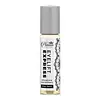What's inside
What's inside
 Key Ingredients
Key Ingredients

 Benefits
Benefits

 Ingredients Side-by-side
Ingredients Side-by-side

Water
Skin ConditioningGlycerin
HumectantButylene Glycol
HumectantLactobacillus Ferment Lysate Filtrate
Skin ConditioningCamellia Sinensis Leaf Extract
AntimicrobialPunica Granatum Extract
AstringentCaffeine
Skin ConditioningSodium Hyaluronate
HumectantHydroxypropyl Methylcellulose
Emulsion StabilisingPullulan
Porphyridium Cruentum Extract
Skin ConditioningAcetyl Tetrapeptide-5
HumectantPhenoxyethanol
PreservativeEthylhexylglycerin
Skin ConditioningSodium Citrate
BufferingWater, Glycerin, Butylene Glycol, Lactobacillus Ferment Lysate Filtrate, Camellia Sinensis Leaf Extract, Punica Granatum Extract, Caffeine, Sodium Hyaluronate, Hydroxypropyl Methylcellulose, Pullulan, Porphyridium Cruentum Extract, Acetyl Tetrapeptide-5, Phenoxyethanol, Ethylhexylglycerin, Sodium Citrate
Water
Skin ConditioningPropanediol
SolventSodium Hyaluronate
HumectantCaffeine
Skin ConditioningWithania Somnifera Extract
Skin ConditioningBrassica Oleracea Acephala Leaf Extract
HumectantHippophae Rhamnoides Fruit Oil
Skin ProtectingCamellia Sinensis Leaf Extract
AntimicrobialHydrolyzed Rice Protein
Skin ConditioningHydrolyzed Soy Protein
HumectantGlycerin
HumectantZingiber Officinale Root Extract
MaskingPanthenol
Skin ConditioningBetaine
HumectantPalmitoyl Tripeptide-1
Skin ConditioningCopper Tripeptide-1
Skin ConditioningPalmitoyl Tetrapeptide-7
Skin ConditioningSuperoxide Dismutase
AntioxidantChrysin
Skin ConditioningCurcuma Longa Callus Extract
Skin ProtectingPolyglutamic Acid
Skin ConditioningCaprylyl Glycol
EmollientButylene Glycol
HumectantXanthan Gum
EmulsifyingPhenoxyethanol
PreservativeEthylhexylglycerin
Skin ConditioningWater, Propanediol, Sodium Hyaluronate, Caffeine, Withania Somnifera Extract, Brassica Oleracea Acephala Leaf Extract, Hippophae Rhamnoides Fruit Oil, Camellia Sinensis Leaf Extract, Hydrolyzed Rice Protein, Hydrolyzed Soy Protein, Glycerin, Zingiber Officinale Root Extract, Panthenol, Betaine, Palmitoyl Tripeptide-1, Copper Tripeptide-1, Palmitoyl Tetrapeptide-7, Superoxide Dismutase, Chrysin, Curcuma Longa Callus Extract, Polyglutamic Acid, Caprylyl Glycol, Butylene Glycol, Xanthan Gum, Phenoxyethanol, Ethylhexylglycerin
Ingredients Explained
These ingredients are found in both products.
Ingredients higher up in an ingredient list are typically present in a larger amount.
Butylene Glycol (or BG) is used within cosmetic products for a few different reasons:
Overall, Butylene Glycol is a safe and well-rounded ingredient that works well with other ingredients.
Though this ingredient works well with most skin types, some people with sensitive skin may experience a reaction such as allergic rashes, closed comedones, or itchiness.
Learn more about Butylene GlycolCaffeine is most associated with coffee, tea, and cacao. In skincare, it helps with calming inflammation and is rich in antioxidants.
While caffeine is used to treat cellulite and and dark circles, further studies are needed to prove this. It has been believed to help with these skin conditions due to its ability to dilate blood vessels and increase blood flow.
Some studies are looking into caffeine's ability to protect against UV rays.
Learn more about CaffeineCamellia Sinensis Leaf Extract is derived from the leaves of the tea plant. Black tea, green tea, and oolong tea are all harvested from this plant.
This ingredient has many skin benefits:
This ingredient contains polyphenols, a strong antioxidant. Antioxidants help fight off molecules that damage skin cells.
On top of that, the antioxidants in green tea neutralize free-radicals from the sun. This gives the skin some extra UV protection, but should not replace sunscreen.
Many components of tea have anti-inflammatory properties.
Polyphenols and L-theanine help soothe the skin and reduce irritation. The caffeine in Camellia Sinensis Leaf Extract helps calm inflamed blood vessels.
Other compounds found in tea include: Vitamin Bs, linoleic acid, magnesium, calcium, iron, and zinc.
Research has shown both drinking Camellia Sinensis Leaf Tea and applying it to the skin can help boost skin elasticity and hydration. Studies also show using tea extract may reduce sebum, or oil, production.
Learn more about Camellia Sinensis Leaf ExtractEthylhexylglycerin (we can't pronounce this either) is commonly used as a preservative and skin softener. It is derived from glyceryl.
You might see Ethylhexylglycerin often paired with other preservatives such as phenoxyethanol. Ethylhexylglycerin has been found to increase the effectiveness of these other preservatives.
Glycerin is already naturally found in your skin. It helps moisturize and protect your skin.
A study from 2016 found glycerin to be more effective as a humectant than AHAs and hyaluronic acid.
As a humectant, it helps the skin stay hydrated by pulling moisture to your skin. The low molecular weight of glycerin allows it to pull moisture into the deeper layers of your skin.
Hydrated skin improves your skin barrier; Your skin barrier helps protect against irritants and bacteria.
Glycerin has also been found to have antimicrobial and antiviral properties. Due to these properties, glycerin is often used in wound and burn treatments.
In cosmetics, glycerin is usually derived from plants such as soybean or palm. However, it can also be sourced from animals, such as tallow or animal fat.
This ingredient is organic, colorless, odorless, and non-toxic.
Glycerin is the name for this ingredient in American English. British English uses Glycerol/Glycerine.
Learn more about GlycerinPhenoxyethanol is a preservative that has germicide, antimicrobial, and aromatic properties. Studies show that phenoxyethanol can prevent microbial growth. By itself, it has a scent that is similar to that of a rose.
It's often used in formulations along with Caprylyl Glycol to preserve the shelf life of products.
Sodium Hyaluronate is hyaluronic acid's salt form. It is commonly derived from the sodium salt of hyaluronic acid.
Like hyaluronic acid, it is great at holding water and acts as a humectant. This makes it a great skin hydrating ingredient.
Sodium Hyaluronate is naturally occurring in our bodies and is mostly found in eye fluid and joints.
These are some other common types of Hyaluronic Acid:
Learn more about Sodium HyaluronateWater. It's the most common cosmetic ingredient of all. You'll usually see it at the top of ingredient lists, meaning that it makes up the largest part of the product.
So why is it so popular? Water most often acts as a solvent - this means that it helps dissolve other ingredients into the formulation.
You'll also recognize water as that liquid we all need to stay alive. If you see this, drink a glass of water. Stay hydrated!
Learn more about Water